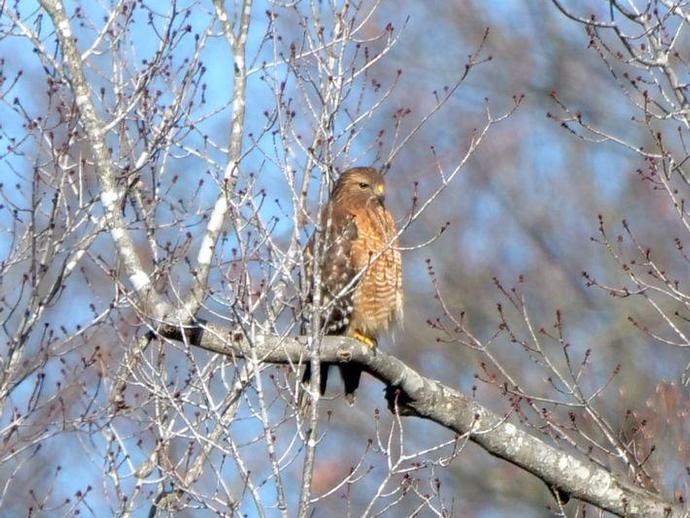January 10, 2022
Ben here with today's edition of #BenInNature presented by our friends at Carter Bank & Trust!
The red-shouldered hawk (Buteo lineatus) can be spotted year-round in Virginia, and its range covers most of the eastern half of the U.S. (along with the California coast).
These beautiful hawks are most often found in forests and swampland. They love hardwood stands and flooded deciduous swamps, although they can occasionally be found in suburban settings if a hardwood forest is somewhere nearby.
Red-shouldered hawks tend to search for prey while perched in treetops; this one is almost certainly keeping an eye open for prey below its perch. When they sight a prey animal, they kill it by dropping directly onto it from the air! They have excellent vision, and they can easily spot small mammals on the forest floor, which are their most common prey. Voles, gophers, mice, moles, and chipmunks are common prey items, although they can also take down rabbits! They also eat amphibians, reptiles, fish, and even other birds.
While red-shouldered hawks are not considered threatened, their numbers are not what they used to be. Prior to 1900, this hawk was one of our most common raptors. However, the clearing of mature hardwood forests seriously hurt their numbers, not to mention unregulated hunting prior to conservation laws and the use of the pesticide DDT. While they may not be in immediate danger, it's still a welcome surprise to spot a red-shouldered hawk!
ABOUT #BenInNature
Social distancing can be difficult, but it presents a great opportunity to become reacquainted with nature. In this series of posts, Administrator of Science Ben Williams ventures outdoors to record a snapshot of the unique sights that can be found in the natural world. New updates are posted Monday - Friday, with previous posts highlighted on the weekends. This series of posts is made possible thanks to the support of VMNH Corporate Partner Carter Bank & Trust (www.cbtcares.com).
NATURE PHOTO IDENTIFICATIONS
If you discover something in nature that you would like help identifying, be sure to message us right here on Facebook with a picture (please include location and date of picture) and we'll have our experts help you identify it!

 Hours & Admissions
Hours & Admissions Directions
Directions

